A pet should be a rightful part of your family – one who should be cherished and loved all its life, no matter what.
But, sadly, not all people think that way. For whatever reason, some heartless owners decide to dump their dog on the street like it never belonged to them.
This is exactly what happened to this beautiful dog mom and her three babies.
All of a sudden, the four of them found themselves abandoned on a deserted road with no one and nothing in sight to help them.
The poor mom was desperate to keep her puppies alive, but without food and proper shelter, their days were numbered.
Coming To The Rescue
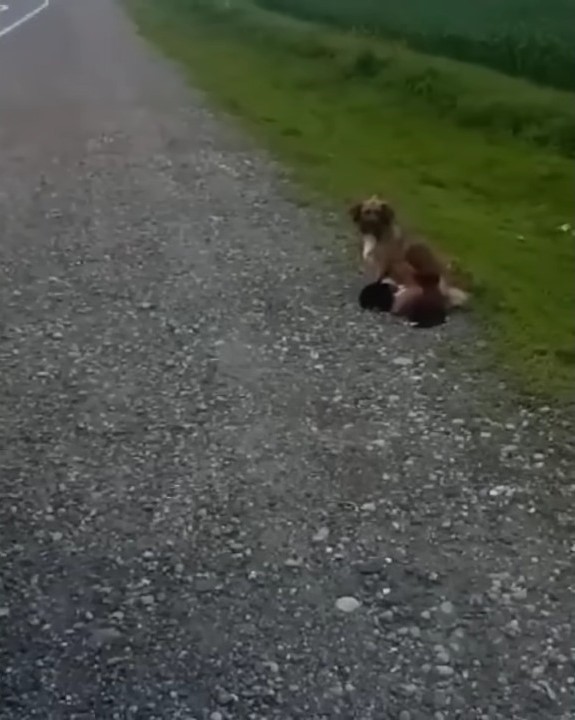
A local animal rescuer found them on a deserted road begging for help. They were dumped in a single cardboard box on a very hot day.
The poor puppies were way too young to be outside in such hot weather. They were all exhausted and desperate for shelter.
Writing this, it simply breaks my heart to even think about this poor little family. I will never understand how someone can do something like this.
The kind-hearted rescuer immediately picked up the whole family and brought them to the shelter.
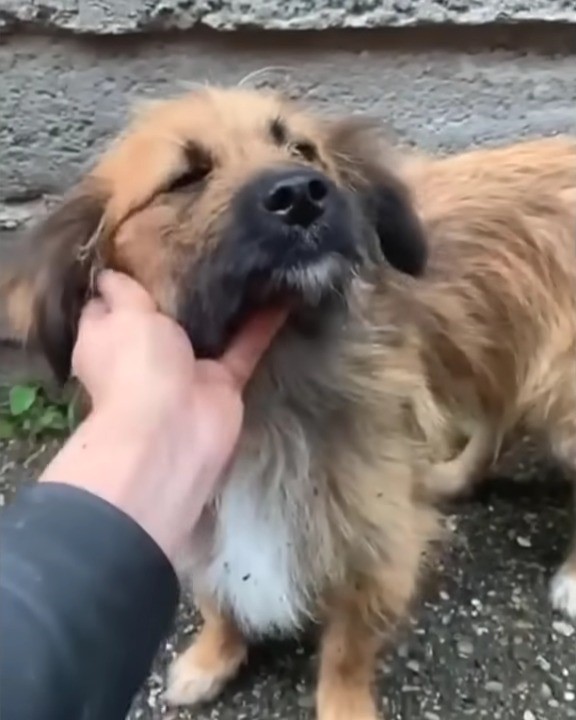
She decided to name the mother Gina, who she quickly noticed was very smart. Gina enjoyed being petted, caressed, and loved after the horrible experience she went through.

The little puppies wasted no time in befriending other pups their age in the house, eagerly devouring the food they were finally given.
It was heart-wrenching to see how hungry they were.
More Heartbreak
Sadly, the hard times were still not over for this little family. That same night, after being rescued, the puppies started to vomit a lot.
No one knew what was wrong with them, so they quickly rushed them all to the vet to be checked out.
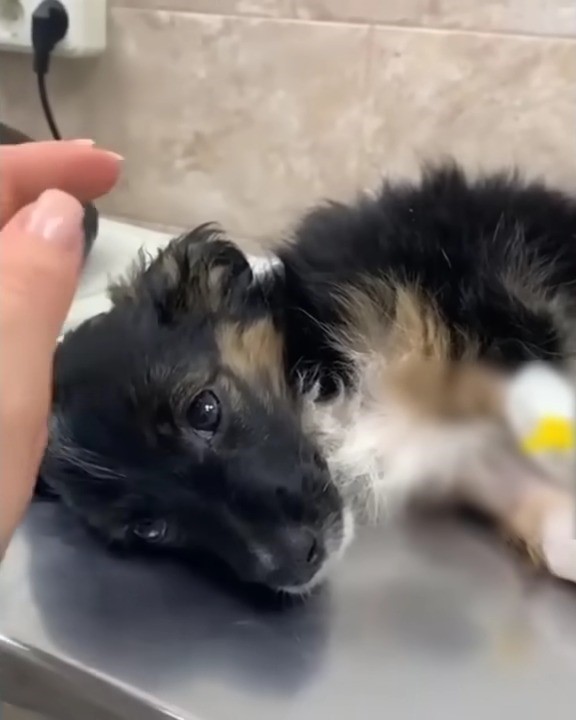
It turned out that they had inflammatory bowel disease and their current condition was very critical.
All three of them looked very lethargic and in pain. Sadness washed over their little faces.
The doctors tried to do everything they could to save them, but sadly, for the two puppies, Loy and Pinky, the disease was too much to handle. They crossed the Rainbow Bridge peacefully in the rescuer’s arms.
They left the world knowing that someone loved them after all.
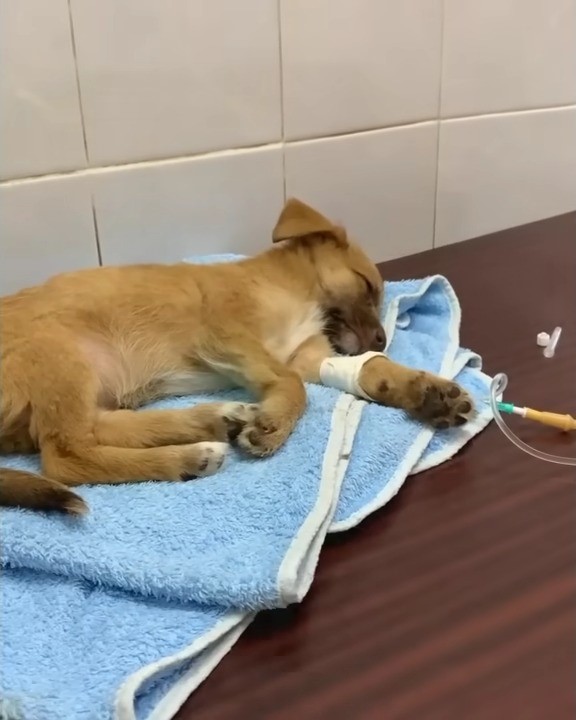
Aisi, the only puppy left, was still fighting for her life. She received a blood transfusion and was constantly monitored by the vet.
During all this time, her rescuer refused to leave her side. She watched and prayed over her, hoping that she would survive.
Thankfully, her tears and prayers seemed to pay off, and Aisi slowly started to feel better. Soon, she was out of danger and was even able to sit up, which was a major improvement.
Finally, A Happy Ending
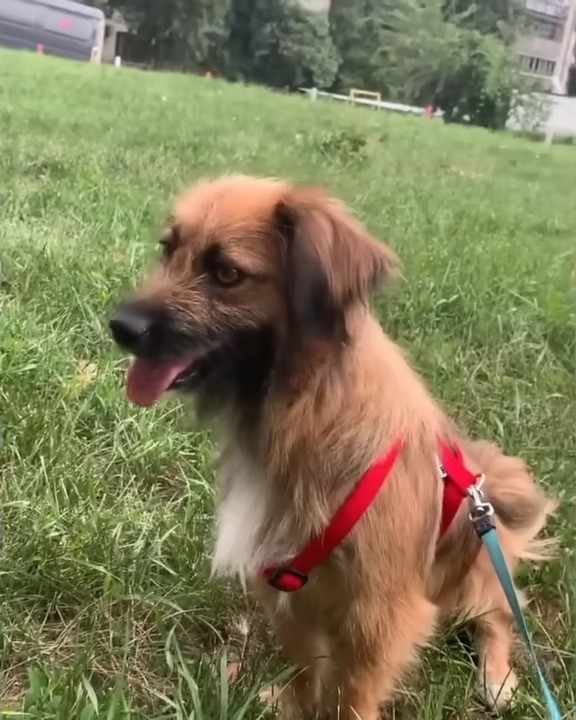
The mother dog, Gina, ended up finding her own forever family – one that would never abandon her again.
It was a very kind family that loved her very much. After everything she had been through, it was finally time for little Gina to be happy. Better days lay ahead for her.
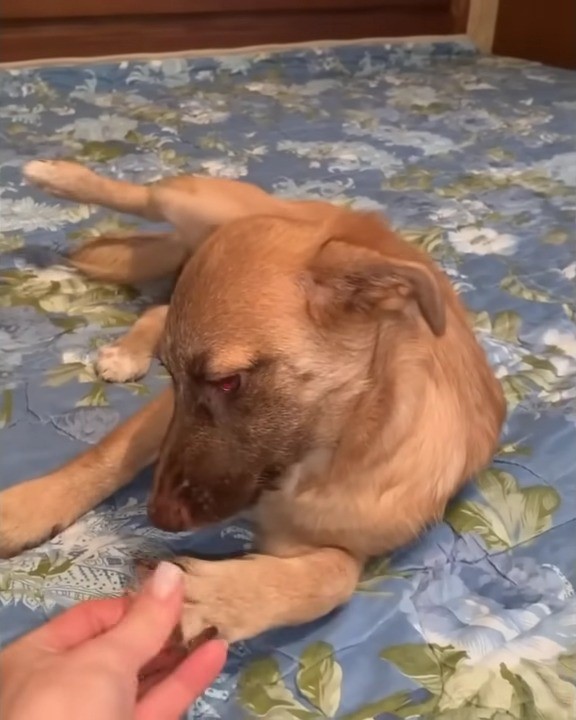
The only puppy that survived – Aisa – went to live with her rescuer. She fell in love with her and couldn’t let her go somewhere else.
Aisa now lives in a happy and loving home, surrounded by many other furry friends to play with. All the hardships are behind her.
Hopefully, her past is long forgotten, and now she knows only love and happiness.
If you’ve ever noticed your furry friend dry heaving, it can be a concerning sight. As a seasoned dog enthusiast, you understand that our canine companions can’t verbalize their discomfort, leaving us to decipher their signals. When your dog starts dry heaving, it’s like a silent plea for attention, a subtle indication that something might be amiss.
You’ve spent countless moments bonding with your pet, learning their habits, and forming an unbreakable connection. So, when you witness them dry heaving, it tugs at your heartstrings, urging you to figure out the underlying cause. In the world of dog ownership, every wag of the tail and every bark holds a story; decoding the mystery behind your dog’s dry heaving is just another chapter in your shared journey.
Understanding Dry Heaving in Dogs
What Is Dry Heaving?
Dry heaving in dogs is the rhythmic contraction of the abdominal muscles without any expelled vomit. It’s often mistaken for vomiting, but the absence of actual vomit is a key distinction. Your furry friend may make retching sounds and go through the motions of vomiting, but nothing comes out. This can be concerning for dog owners as it indicates an underlying issue that needs attention.
Common Triggers for Dry Heaving
Several factors can trigger dry heaving in dogs. One common cause is the ingestion of something indigestible, such as grass, hair, or foreign objects. These can irritate the stomach and lead to the dog attempting to vomit but only producing dry heaves. Additionally, gastrointestinal issues, infections, parasites, or even stress and anxiety can manifest as dry heaving in dogs.
Remember, if your dog is experiencing persistent or severe dry heaving episodes, it’s essential to consult your veterinarian for a proper diagnosis and treatment. Observing your dog’s behavior and noting any accompanying symptoms can help the vet determine the underlying cause and provide appropriate care for your beloved pet.
Conditions That Can Cause Dry Heaving
Gastric Issues in Dogs
When your dog dry heaves, it could be a sign of gastric problems such as gastritis, where the stomach lining becomes inflamed. Other conditions like acid reflux or gastrointestinal blockages can also lead to dry heaving. These issues can be uncomfortable for your furry friend, so it’s essential to monitor their symptoms closely.
Respiratory Concerns
Respiratory issues can also manifest as dry heaving in dogs. Conditions like kennel cough, pneumonia, or other respiratory infections can irritate your dog’s throat and lead to dry heaving episodes. Keep an eye on your dog’s breathing and consult your vet if you notice any signs of respiratory distress along with the dry heaving.
Foreign Body Ingestion
When your dog ingests a foreign object like a toy, bone, or even plant material, it can get stuck in their throat or digestive tract, causing discomfort and triggering dry heaving. This is a serious concern as it can lead to choking or internal injuries. If you suspect your dog has ingested something they shouldn’t have, seek immediate veterinary attention to prevent complications.
Remember, understanding the potential causes of your dog’s dry heaving is crucial for identifying any underlying health issues and ensuring your pet’s well-being. If your dog experiences persistent or severe dry heaving episodes, don’t hesitate to consult your veterinarian for proper diagnosis and treatment.
When to Worry About Your Dog’s Dry Heaving
Symptoms to Monitor
Dry heaving in dogs can be concerning, but it’s essential to know when to worry. Look out for symptoms like repeated attempts to vomit without anything coming up, coughing, labored breathing, lethargy, and loss of appetite. These signs can indicate underlying health issues that need prompt attention.
Severity and Frequency of Dry Heaves
The severity and frequency of your dog’s dry heaving episodes are crucial indicators of when to seek help. If your dog dry heaves occasionally and seems otherwise normal, it may not be a cause for immediate concern. However, if the dry heaving is persistent, accompanied by other symptoms, or becomes more frequent, it’s time to consult your vet. Persistent dry heaving could signify serious health problems that require professional evaluation and treatment.
Diagnosing the Cause of Dry Heaving
What Your Vet May Ask
When you take your dog to the vet for dry heaving, they’re likely to ask you questions to understand your pet’s condition better. The vet may inquire about any recent changes in your dog’s diet, if they have access to foreign objects, or if they might be showing other symptoms like coughing, lethargy, or breathing difficulties. Remember, providing detailed information will help the vet in making an accurate diagnosis.
Possible Diagnostic Tests
To get to the bottom of why your dog is dry heaving, the vet might recommend specific diagnostic tests. These could include a physical examination to check for signs of abdominal pain or blockages. Blood tests may be conducted to assess organ function or check for infections. X-rays or ultrasounds could help identify any gastrointestinal obstructions or abnormalities. In some cases, the vet might suggest a fecal examination to rule out parasites as a potential cause of your dog’s distress.
Remember, early diagnosis and treatment are crucial in addressing the underlying issues that may be causing your dog’s dry heaving. Always consult your vet if you notice persistent or concerning symptoms in your furry companion.
Treatments for Dry Heaving in Dogs
Home Remedies and Care
When dealing with your dog’s dry heaving at home, there are a few things you can do to help ease their discomfort. Firstly, ensure your dog has access to fresh water at all times to stay hydrated. Additionally, feeding your dog smaller, more frequent meals can alleviate the strain on their digestive system. Keeping your dog in a calm and quiet environment can also help reduce stress, which may be a contributing factor to their dry heaving episodes. If the dry heaving persists or worsens, it’s essential to seek veterinary care promptly.
Medical Interventions and Therapies
If your dog’s dry heaving persists and home remedies don’t provide relief, your veterinarian may recommend medical interventions and therapies. Depending on the underlying cause determined through diagnostic tests, treatments may include medication to address gastrointestinal issues or respiratory problems. In some cases, your dog may require intravenous fluids to rehydrate and stabilize their condition. Surgical intervention may be necessary for conditions like foreign body obstructions. Your vet will tailor the treatment plan based on the specific needs of your dog to provide the best possible care. Remember, always follow your vet’s guidelines and recommendations for your dog’s treatment.
Preventing Future Episodes of Dry Heaving
Dietary Adjustments
To help prevent future episodes of dry heaving in your dog, consider making some dietary adjustments. Ensure your dog has a balanced diet with high-quality food that suits their digestive system. Avoid giving them food that may trigger gastrointestinal issues or allergies. You can also feed them smaller, more frequent meals throughout the day to help with digestion and reduce the chances of dry heaving.
Environmental Changes
Making some simple environmental changes can also aid in preventing dry heaving in your furry friend. Create a calm and stress-free environment for your dog, as anxiety and stress can contribute to digestive issues and lead to dry heaving. Ensure your dog has access to fresh water at all times to stay hydrated and maintain good overall health. Additionally, regular exercise and mental stimulation can help keep your dog happy and healthy, reducing the likelihood of digestive issues that may cause dry heaving.
Conclusion
So, there you have it – dry heaving in dogs can be caused by various factors like gastric issues, respiratory problems, or even something as simple as a change in diet. Remember, it’s crucial to keep an eye on your furry friend’s symptoms and seek veterinary advice promptly if needed. Treatments range from simple home remedies to more complex medical interventions, but the key is to ensure your dog’s well-being is a top priority. By making some adjustments to their diet, environment, and lifestyle, you can help reduce the chances of future episodes. Always listen to your vet’s recommendations and give your pup the care they deserve. Your furry companion will thank you with tail wags and wet kisses!
Frequently Asked Questions
Q: What are the potential causes of dry heaving in dogs?
A: Potential causes of dry heaving in dogs include gastric issues, respiratory problems, and foreign body ingestion.
Q: Why is prompt veterinary care important for dogs experiencing dry heaving?
A: Prompt veterinary care is crucial for dogs with dry heaving to identify and address underlying health issues effectively.
Q: How can dog owners monitor symptoms of dry heaving at home?
A: Dog owners can monitor symptoms like repeated attempts to vomit, coughing, and lethargy in their pets.
Q: What is the diagnostic process for dry heaving in dogs?
A: The diagnostic process may involve a vet asking about diet changes, conducting physical exams, blood tests, and imaging to determine the cause of dry heaving.
Q: What are the recommended treatments for dry heaving in dogs?
A: Treatments may include providing fresh water, smaller meals, and a calm environment, alongside seeking veterinary care if symptoms persist.
Q: How can owners prevent future episodes of dry heaving in dogs?
A: Preventive measures may include offering a balanced diet, smaller and more frequent meals, a stress-free environment, regular exercise, mental stimulation, and following vet recommendations.
[no_toc]

Hey there, I’m Janet Brooks, a dog-loving student from California. I’m all about helping pups in need, especially those without homes. Me and my awesome friends work together to give shelter and love to stray dogs. Oh, and I also write blogs about dogs to share helpful info.